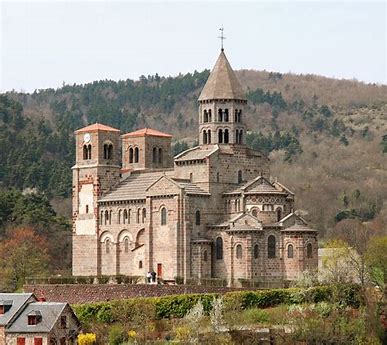
Pierre de Tarentaise was probably born near Moutiers in the Tarantaise region of Savoy, around 1225. But that is all we know of his early years.
Around 1240, he joined the Order of Preachers (Dominicans) at their convent at Lyon, France. Fifteen years later, Pierre transferred to the stadium generale at the Convent de St. Jacques, in Paris. He most likely made this move so that he could study theology at the great Parisian university. And within four years, he earned a Master of Theology. In the next few years, Pierre became a renowned preacher.
Between 1259 and 1264, Pierre held the “Chair of the French”, a professorship at the University of Paris. Shortly after, the General Chapter of Dominicans met at Valenciennes, under the leadership of Master General, Humbert de Romans. Pierre either was an elected delegate or he was invited due to his occupancy of the Chair of the French. He became acquainted with Albert the Great and Thomas Aquinas, among other famous men of the Order. Here, the Chapter established a program of studies for the entire order, insisting that philosophy is a preparation for those not sufficiently trained in theology. Each convent was to have a lector to supervise the preparative plus an elected Master for theology.
The very next year, Pierre became a preacher general. When Humbert de Romans died in 1263, John of Vercelli became the new Master General. Pierre had written a Commentary on the Sentences of Peter Lombard. John accused Pierre of heretical writings. Then he hired Thomas Aquinas to write a defense of Pierre’s propositions. This took three years.
Meanwhile, Pierre had to withdraw from his professorship. He became provincial general of France during those years. At the 1267 General Chapter, Aquinas showed Pierre’s theological teaching was sound. Pierre was released from his position in France and went back to the University to teach once again. In 1269, Pierre again became provincial general.
In such prestigious positions, Pierre attracted the attention of Pope Gregory X, who became pope 1 September, 1271. He became Gregory’s intimate advisor. In June of 1272, Gregory named Pierre the Archbishop of Lyon, France. Only a year later, Pierre became a cardinal and the bishop of Ostia, a prized see.
Gregory opened the Second Council of Lyon in May 1274. Pierre attended. On the agenda were the Crusade and the reunion of the East and the West. Although the council was only two months in length, it was not until the following May that Gregory and his entourage left town. For seven months, they wound their way to Aiezzo where Gregory died 10 January 1276. Pierre was with him.
HIS PAPACY
In a true conclave designed only a few years before, the cardinals waited ten days to elect the new pope. It was unanimous on the first ballot. Pierre was pope. He insisted upon being crowned in Rome, so they proceeded southward. King Charles of Sicily and his army met up with the small band in Viterbo and escorted the new pope, Innocent V to Rome. The new pope received his crown 22 February 1276, the Feast of St. Peter’s Chair.
No sooner had Innocent moved in to the Lateran than he granted privileges to Charles, such as retaining his senatorship and governorship of Rome. In rapid succession, Innocent wrote letters testifying that Charles had sworn fealty for the Kingdoms of Naples and Sicily. Then he wrote to the prospective emperor of the Holy Roman Empire, Rudolf, that his coronation was postponed, and to not come to Rome. A week later, he wrote to Rudolf asking him to meet with papal nuncios and not mention the disputed city of Ravenna. Suddenly, Innocent’s favoritism to Charles and harshness to Rudolf changed the balance of power, making war once again a possibility. Pope Gregory’s unfinished attempt at peace was ruined.
Through the early summer, Innocent appointed Fr. Guy de Sully, the Dominican provincial of France, to the see of Bourges, he signed a peace treaty between Genoa and Naples and set up various negotiations with the Byzantine emperor to arrange a reunion of East and West.
And then he died. He had been pope five months. The cardinals buried him at the Lateran and waited ten days to call a conclave with the same cardinals as the last time.
Besides his Commentary on Peter Lombard, Pope Innocent V was the author of several works on philosophy, theology, and canon law plus commentaries on Paul’s epistles.
Innocent was beatified by Pope Leo III on 9 March 1898 on account of his reputation for holiness.

Recent Comments